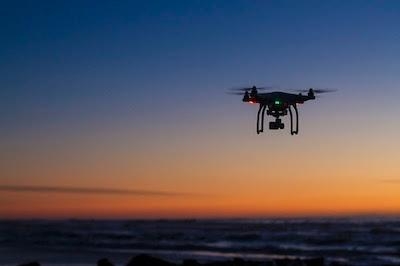Tue, May 21, 2019
Drones May Not Be Flown Closer Than 3,000 Feet Laterally Or 1,000 Feet Above Any Navy Ship
At the request of its federal security partners, the Federal Aviation Administration (FAA) is using its existing authority under Title 14 of the Code of Federal Regulations (14 CFR) § 99.7 – “Special Security Instructions” – to restrict drone operations over select facilities and assets.

The FAA has established special security instructions that restrict drone operations in airspace up to 2,000 feet mean sea level (MSL) near U.S. territorial and navigable waters. These new restrictions specifically prohibit drone flights in this airspace within a stand-off distance of 3,000 feet laterally and 1,000 feet above any U.S. Navy vessel.
UAS operators who violate the flight restrictions may be subject to enforcement action, including potential civil penalties and criminal charges. Violators may also face security enforcement action that results in the interference, disruption, seizure, damaging or destruction of unmanned aircraft considered to pose a safety or security threat to protected U.S. Navy assets.
The restrictions are detailed in Notice to Airmen (NOTAM), and can be found at the UAS Data Display System (UDDS) website. Unmanned Aircraft System (UAS) operators are urged to familiarize themselves with these NOTAMs and to go to UDDS to help them comply with these FAA restrictions, which are put in place to support the nation’s security. UDDS provides precise descriptions of the airspace to which these restrictions are applied, procedures to access this airspace, an interactive map, downloadable geospatial data and other crucial information and tools for UAS operators. A link to these restrictions is also included in the FAA’s B4UFLY mobile app.
The FAA is considering additional requests by eligible federal security agencies for UAS-specific airspace restrictions using the agency’s § 99.7 authority as they are received. Additional changes to these restrictions will be announced by the FAA as appropriate.
UAS operators can find more information on a broader range of issues related to flying drones in the National Airspace System on the FAA’s main UAS website, including answers to frequently asked questions.
(Source: FAA news release. Image from file)
More News
Also: B-29 Superfortress Reunion, FAA Wants Controllers, Spirit Airlines Pulls Back, Gogo Galileo Van's Aircraft posted a short video recapping the goings-on around their reorganiz>[...]
Light Gun A handheld directional light signaling device which emits a brilliant narrow beam of white, green, or red light as selected by the tower controller. The color and type of>[...]
"The journey to this achievement started nearly a decade ago when a freshly commissioned Gentry, driven by a fascination with new technologies and a desire to contribute significan>[...]
"Our driven and innovative team of military and civilian Airmen delivers combat power daily, ensuring our nation is ready today and tomorrow." Source: General Duke Richardson, AFMC>[...]
Aircraft Conflict Predicted conflict, within EDST of two aircraft, or between aircraft and airspace. A Red alert is used for conflicts when the predicted minimum separation is 5 na>[...]
 Airborne 04.16.24: RV Update, Affordable Flying Expo, Diamond Lil
Airborne 04.16.24: RV Update, Affordable Flying Expo, Diamond Lil ANN's Daily Aero-Term (04.20.24): Light Gun
ANN's Daily Aero-Term (04.20.24): Light Gun Aero-News: Quote of the Day (04.20.24)
Aero-News: Quote of the Day (04.20.24) Aero-News: Quote of the Day (04.21.24)
Aero-News: Quote of the Day (04.21.24) ANN's Daily Aero-Term (04.21.24): Aircraft Conflict
ANN's Daily Aero-Term (04.21.24): Aircraft Conflict



